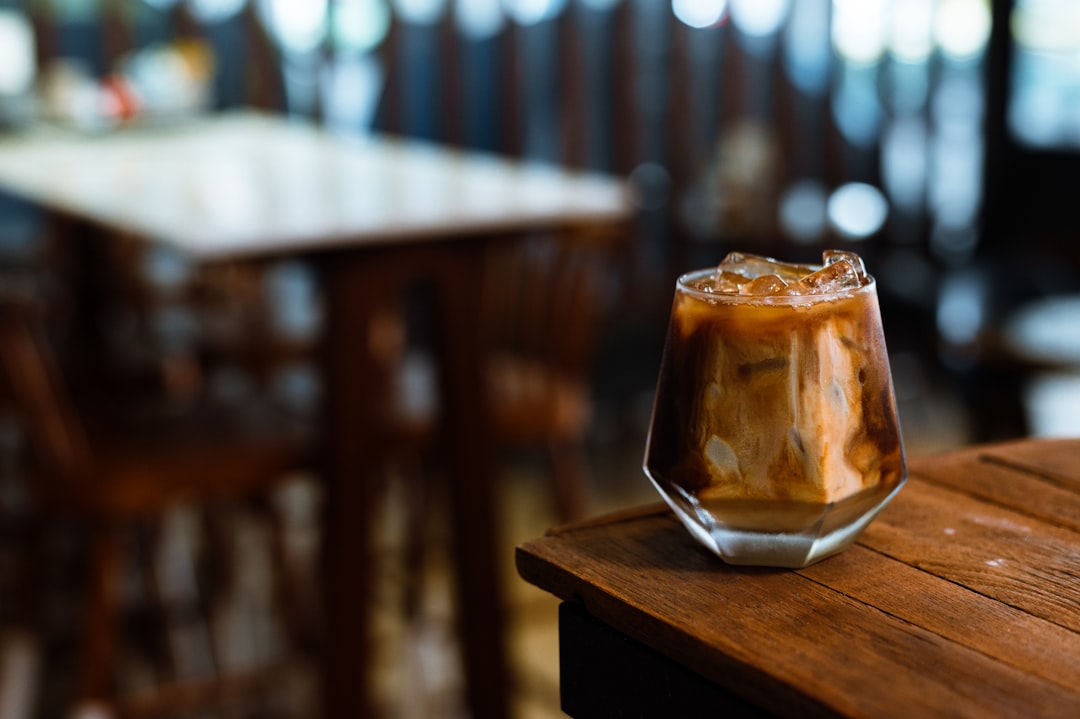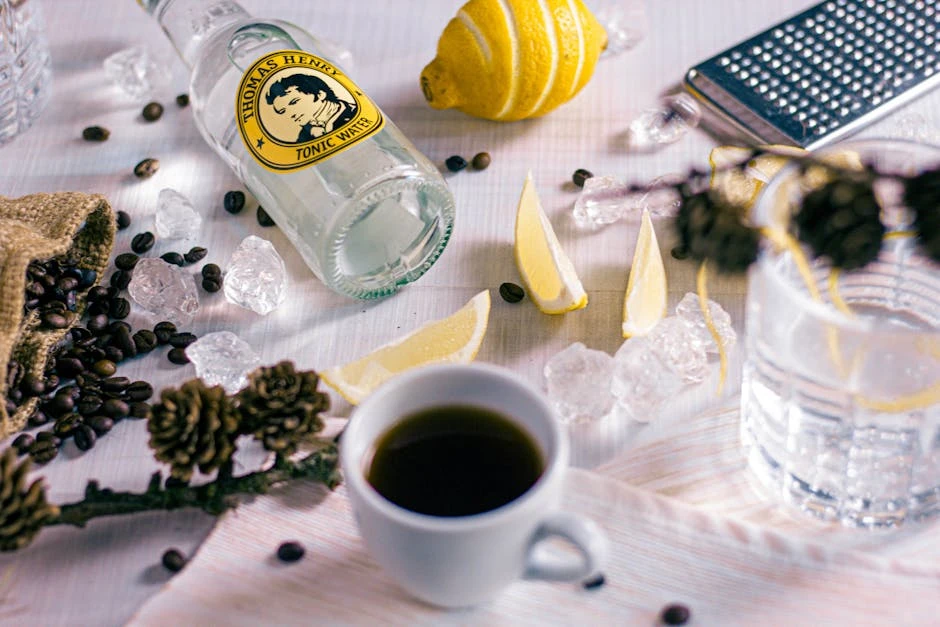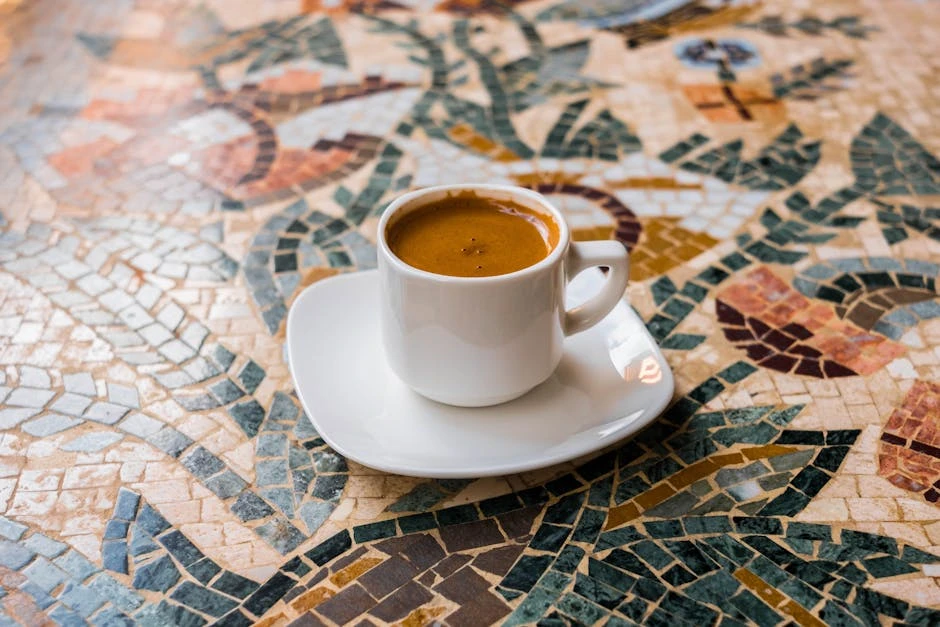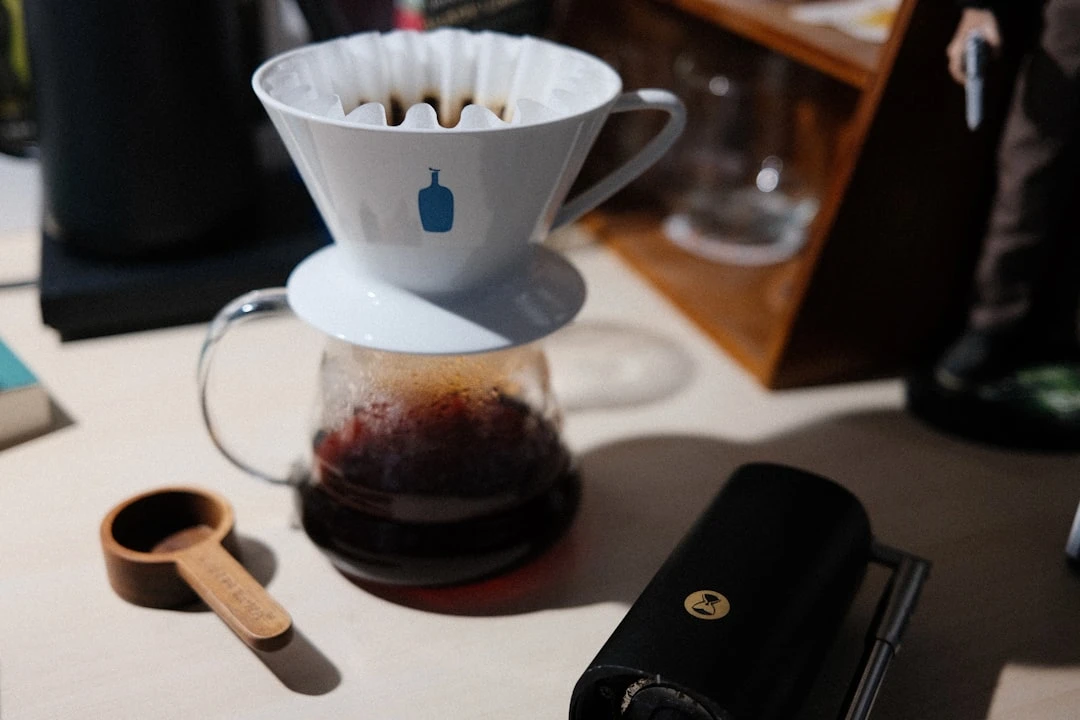Cold Brew vs. Americano: What Is the Difference?

Did you know that the average American drinks about 3 cups of coffee per day, but most people can't even tell you the difference between cold brew and an americano? I used to be one of those people! Standing in line at my local coffee shop, staring at the menu like it was written in ancient Greek, trying to figure out which drink would actually wake me up without breaking the bank.
The choice between cold brew vs americano isn't just about taste – it's about your lifestyle, your budget, your caffeine needs, and honestly, how much patience you have in the morning. After years of coffee shop experiments (and some pretty expensive mistakes), I've figured out when each drink shines and when it totally misses the mark.
In this guide, I'm gonna walk you through everything I wish someone had told me when I first started taking coffee seriously. We'll cover taste differences, caffeine content, cost comparisons, and brewing methods that actually work at home. By the end, you'll know exactly which drink fits your life better!
What Is Cold Brew Coffee?
Cold brew is basically coffee's patient cousin – the one who never rushes and always stays cool under pressure. Unlike regular iced coffee (which is just hot coffee poured over ice), cold brew is made by steeping coarsely ground coffee beans in cold or room temperature water for 12 to 24 hours. Yeah, you read that right – up to a full day!
I remember my first attempt at making cold brew was a total disaster. I thought I could speed up the process by using hot water and then cooling it down. Wrong move! The result tasted like someone had mixed dirt with water and called it a day. The magic of cold brew happens during that long, slow extraction process that pulls out the coffee's natural sweetness while leaving behind most of the bitter compounds and acids.
The brewing process is surprisingly simple, though it requires some serious planning ahead. You combine coffee grounds with cold water at about a 1:4 or 1:5 ratio, let it sit for anywhere from 12 to 24 hours (I've found 18 hours hits the sweet spot), then strain out the grounds. What you're left with is a coffee concentrate that's smooth, naturally sweet, and less acidic than traditional hot-brewed coffee.
Here's what blew my mind when I finally got it right: cold brew doesn't need sugar or cream to taste good. The slow extraction process brings out chocolate and caramel notes that I never knew existed in coffee. It's like discovering a whole new drink that just happens to be made from the same beans you've been drinking for years.
The texture is different too – thicker and almost syrupy when it's concentrated. You can dilute it with water, milk, or even drink it straight if you're feeling brave (and want to vibrate through your morning meetings).
What Is an Americano?
An americano is essentially espresso's way of pretending to be regular drip coffee, and honestly, it does a pretty convincing job. The drink is made by pulling one or two shots of espresso and then adding hot water to dilute it down to roughly the strength of drip coffee. Simple as that!
The story goes that American soldiers during World War II found European espresso too strong for their taste, so they started adding hot water to make it more like the coffee they were used to back home. Whether that story's true or not, the name stuck, and now you can order an americano pretty much anywhere in the world.
I used to think americanos were just watered-down espresso – like the coffee shop was trying to rip me off by giving me less coffee for the same price. Boy, was I wrong! The dilution process doesn't just make the coffee weaker; it actually changes the flavor profile entirely. You get the bold, concentrated flavors of espresso but in a more approachable format that you can actually sip and enjoy rather than knock back like a shot.
Making an americano is quick – we're talking 2-3 minutes max if you've got an espresso machine. Pull your shots (I usually go with a double shot because life's too short for weak coffee), add about 6-8 ounces of hot water, and you're done. No waiting around for 18 hours like some other brewing methods I could mention.
The temperature is another big difference. While cold brew is obviously served cold, an americano is typically served hot, making it perfect for those chilly mornings when you need something to warm you up from the inside out. Though lately, I've been seeing more iced americanos on menus, which is basically espresso shots poured over ice and topped with cold water.
Taste Differences: Cold Brew vs Americano Flavor Profiles
This is where things get really interesting, and honestly, where most people make their decision between the two drinks. The taste difference between cold brew and americano is like comparing a smooth jazz song to a rock anthem – both are great, but they hit you completely differently.
Cold brew is the smooth operator of the coffee world. Because it's never exposed to hot water, the extraction process pulls out fewer of the bitter compounds and acids that can make coffee taste harsh. The result is naturally sweet, almost chocolatey, with notes that remind me of caramel or even vanilla. I was shocked the first time I tasted properly made cold brew without any added sugar – it was actually sweet on its own!
The mouthfeel is different too. Cold brew has this almost creamy texture that coats your tongue in the best possible way. It's like drinking liquid silk, which sounds fancy but honestly describes it perfectly. There's no sharp bite, no acidic punch that makes you scrunch up your face.
Americanos, on the other hand, taste like what most people think coffee should taste like. You get those bold, traditional coffee flavors – slightly bitter, acidic enough to wake you up, with that familiar coffee shop aroma that fills the room. It's got more of that "roasted" taste that comes from the high-temperature espresso extraction process.
I've noticed that americanos can vary a lot depending on the espresso blend and how skilled the barista is. A good americano should taste rich and full-bodied, not watery or bitter. A bad one tastes like someone mixed burnt water with regret. Cold brew is more forgiving – as long as you get the ratios and timing right, it's hard to mess up.
Here's something interesting I discovered through trial and error: cold brew is way more consistent. Make a batch on Sunday, and it'll taste the same on Friday. Americanos can vary from cup to cup depending on the espresso extraction, water temperature, and timing.
Caffeine Content Comparison: Which Packs More Punch?
If you're drinking coffee for the caffeine (and let's be honest, most of us are), this section is gonna be your best friend. The caffeine content difference between cold brew and americano can be significant, though it's not as straightforward as you might think.
Cold brew typically packs more caffeine per ounce than an americano, but here's where it gets tricky – serving sizes matter a lot. A typical cold brew concentrate can have anywhere from 150-300mg of caffeine per 8-ounce serving, depending on the coffee-to-water ratio and steeping time. I learned this the hard way when I made my first batch super strong and couldn't sleep for two days straight!
Americanos usually contain about 150-200mg of caffeine per 8-ounce serving, since they're made with 1-2 shots of espresso (each shot containing roughly 75-100mg of caffeine) diluted with hot water. The dilution doesn't reduce the caffeine content – it just spreads it out over a larger volume.
But here's what really matters: how you drink them. I tend to sip cold brew slowly throughout the morning, which gives me a steady caffeine drip rather than the quick hit you get from an americano. With an americano, I usually finish it within 15-20 minutes, so all that caffeine hits my system pretty quickly.
The caffeine in cold brew also seems to affect me differently – probably because of the lower acidity. I don't get that jittery feeling or the crash that sometimes comes with americanos. My theory is that the smoother extraction process in cold brew creates a more balanced caffeine experience, though I'm not sure if there's actual science behind that or if it's just me.
One thing I've definitely noticed: if you're caffeine sensitive, cold brew might be your friend. Even though it can have more total caffeine, the slower absorption seems to be easier on sensitive stomachs and doesn't cause the same level of jitters.
Brewing Time and Convenience Factor
This is where your lifestyle really comes into play, and honestly, where I've made some of my biggest coffee mistakes over the years. The time commitment for each drink is completely different, and understanding this can save you from some serious morning frustration.
Cold brew is all about planning ahead. You can't wake up and decide you want cold brew – that ship sailed 12-24 hours ago. I can't tell you how many times I've forgotten to start a batch and found myself staring sadly at empty mason jars while my coffee-loving friends enjoyed their perfectly planned cold brew. It's like wanting to bake bread but forgetting to start the dough the night before.
But here's the flip side: once you make cold brew, you've got coffee for days. A single batch can last me almost a week, which means less daily prep work. On Sunday evening, I'll start a batch, and by Monday morning, I've got smooth, delicious coffee waiting for me in the fridge. No grinding, no brewing, no waiting – just pour and go.
Americanos are the opposite – instant gratification but daily commitment. If you've got an espresso machine, you can have an americano in your hands within 3-4 minutes of deciding you want one. Perfect for those spontaneous coffee cravings or when you oversleep and need caffeine ASAP.
The equipment factor is huge too. For cold brew, you don't need anything fancy – a mason jar, coffee grounds, water, and something to strain with (even a fine-mesh strainer or cheesecloth works). Total equipment cost: maybe $15 if you don't already have jars.
Americanos require an espresso machine or at least a moka pot, which can range from $50 for a basic setup to several thousand for the fancy stuff. I started with a $60 espresso machine from a big box store, and while it wasn't perfect, it made drinkable americanos that got me through my coffee snobbery development phase.
Cost Analysis: Which Is More Budget-Friendly?
Money talks, and in the coffee world, it can really add up if you're not paying attention. I learned this lesson the expensive way when I calculated how much I was spending on coffee shop visits – let's just say it was more than my car payment!
At coffee shops, americanos typically cost $2-4, while cold brew usually runs $3-5. Doesn't seem like a huge difference until you multiply it by 365 days a year. Cold brew's premium pricing comes from the time-intensive brewing process and the fact that it's trendy right now.
But here's where home brewing changes everything. Making cold brew at home costs roughly $0.50-0.75 per serving, depending on the coffee you use. I buy decent coffee beans in bulk (usually around $8-12 per pound), and one pound makes about 15-20 servings of cold brew concentrate. The math works out beautifully.
Americanos can be even cheaper at home if you're smart about it. Using the same coffee beans, each americano costs about $0.40-0.60 per serving. The catch is the equipment investment – that espresso machine I mentioned earlier. But even a decent machine pays for itself within 2-3 months if you're a daily coffee drinker.
Here's my money-saving discovery: cold brew is more forgiving with cheaper coffee beans. The long, slow extraction process can make even mediocre beans taste pretty good. Americanos are less forgiving – bad beans make bad espresso, and there's no hiding it when you dilute bad espresso with hot water.
I've also found that cold brew reduces waste. With americanos, if I mess up the espresso shot, I have to start over. With cold brew, once it's made, it's made. No do-overs needed, no wasted shots, no frustrated mornings when nothing goes right.
Health Benefits and Considerations
The health differences between cold brew and americano might surprise you – they certainly surprised me when I started researching this stuff after my doctor mentioned that my coffee habit might be contributing to my occasional stomach issues.
Cold brew is significantly less acidic than americano, with about 67% less acid according to some studies. This was a game-changer for me because I've always had a sensitive stomach, especially in the morning. Americanos, with their higher acidity, sometimes left me feeling queasy if I drank them on an empty stomach.
The lower acidity in cold brew isn't just easier on your stomach – it's also better for your teeth. All that acid in regular coffee can contribute to enamel erosion over time. My dentist actually noticed an improvement in my teeth after I switched to primarily drinking cold brew. Who knew coffee choices could affect dental health?
Both drinks contain similar amounts of antioxidants, though the extraction method might affect which specific compounds you're getting. Cold brew seems to preserve more of the naturally occurring sugars in coffee beans, which might explain why it tastes sweeter without any added sugar.
Here's something interesting I discovered: cold brew might be better for people with acid reflux or GERD. My friend Sarah switched from americanos to cold brew on her doctor's recommendation, and her symptoms improved significantly. The lower acidity means less irritation to the esophagus and stomach lining.
But americanos aren't without their benefits. The higher temperature extraction pulls out different compounds that might have their own health benefits. Plus, drinking something hot can be psychologically comforting and might help with digestion in some people.
One thing to watch with cold brew: because it's often served as a concentrate, it's easy to accidentally drink way more caffeine than you intended. I've made this mistake more times than I care to admit, leading to some very jittery afternoons.
Best Times to Drink Each Coffee Type
Timing is everything with coffee, and I've learned through plenty of trial and error that the right drink at the wrong time can ruin your whole day. Let me share what I've figured out about when each drink shines.
Cold brew is summer's best friend. When it's 90 degrees outside and you still need your caffeine fix, hot coffee feels like punishment. Cold brew delivers that smooth caffeine experience without making you sweat more than you already are. I've started making extra-strong cold brew concentrate in May so I'm ready when the heat hits.
But cold brew isn't just for hot weather – it's perfect for afternoon coffee breaks too. Around 2 PM when that post-lunch energy crash hits, cold brew gives you a caffeine boost without the sharp bite that might interfere with your sleep later. The smoother caffeine delivery seems to wear off more gradually than americanos.
Americanos own the morning routine. There's something about holding a hot cup of coffee that signals to your brain that it's time to wake up and face the day. The ritual of making an americano – grinding beans, pulling shots, adding hot water – becomes part of your morning meditation. Cold brew from the fridge just doesn't have the same ceremonial feel.
Winter mornings are made for americanos. When it's freezing outside and your kitchen feels like an icebox, cold brew sounds about as appealing as a cold shower. Hot americanos warm you up from the inside out and give you that "I can handle whatever today throws at me" feeling.
I've also noticed that americanos work better in social situations. Meeting a friend for morning coffee? Americanos encourage conversation and lingering. Cold brew, especially the strong stuff, can be more of a "drink and get going" experience.
Here's a timing mistake I made repeatedly: drinking americanos after 2 PM. The quick caffeine hit combined with the higher acidity would leave me wired at bedtime. Cold brew, with its smoother caffeine delivery, seems to be more forgiving for afternoon consumption.
How to Make the Perfect Cold Brew at Home
After years of experimenting and plenty of failures, I've finally nailed down a cold brew process that works every single time. Let me save you from some of the mistakes I made along the way.
First, the coffee-to-water ratio matters more than you might think. I use a 1:4 ratio for concentrate (1 cup coffee grounds to 4 cups water) or 1:8 for ready-to-drink strength (1 cup grounds to 8 cups water). Start with these ratios and adjust based on your taste preferences. My first few batches were either strong enough to strip paint or weak enough to use as water – finding the sweet spot takes some trial and error.
Grind size is crucial. You want coarse grounds, similar to what you'd use for French press. Fine grounds will over-extract and make your cold brew bitter, plus they're harder to filter out. I learned this the hard way when I tried using pre-ground coffee and ended up with muddy, bitter sludge that I couldn't strain properly.
Here's my foolproof method: combine your coffee and water in a large jar or container, stir well to make sure all grounds are saturated, then cover and let it sit at room temperature for 12-18 hours. I've tried steeping in the fridge, but room temperature extraction seems to work better. After steeping, strain through a fine-mesh strainer lined with cheesecloth or a coffee filter.
The filtering process requires patience – something I didn't have when I first started making cold brew. Rushing the filtering by pressing or squeezing the grounds will make your cold brew cloudy and over-extracted. Let gravity do the work, even if it takes 30 minutes.
Storage is simple: keep your cold brew concentrate in the fridge for up to two weeks. I use mason jars because they're easy to clean and don't absorb odors. Never store cold brew at room temperature once it's made – bacteria can grow in coffee just like any other food product.
How to Make the Perfect Americano at Home
Making a great americano at home was my white whale for about six months. I went through phases of thinking my espresso machine was broken, my coffee was stale, or I just didn't have the skills. Turns out, I was making some pretty basic mistakes that were easy to fix once I knew what to look for.
The espresso shot is everything in an americano. If your espresso is bad, adding hot water isn't going to magically make it good – it's just going to make it bad and watery. I spent way too much time focusing on the water temperature and ratios while ignoring the fact that my espresso shots were pulling too fast and tasting sour.
Here's what I learned about pulling good espresso shots: aim for a 25-30 second extraction time for a double shot. If it's pulling faster, your grind is probably too coarse. If it's taking longer than 35 seconds, your grind might be too fine or you're tamping too hard. The espresso should flow like warm honey – not too fast, not too slow.
Water temperature matters for both the espresso and for diluting. I use water that's just off the boil (around 200°F) for the espresso extraction, and slightly cooler water (around 180°F) for diluting. Using boiling water for dilution can make the americano taste burnt and harsh.
The ratio is typically 1:2 or 1:3 espresso to water, but this is where personal preference comes in. I like my americanos strong, so I go with 1:2 (double shot with about 4 ounces of hot water). Start there and adjust based on your taste.
Here's a technique tip that made a huge difference: add the hot water first, then pour the espresso shots on top. This preserves more of the crema and creates better flavor integration. I used to do it backwards and couldn't figure out why my americanos tasted flat compared to coffee shop versions.
Don't forget about water quality – it makes up most of your drink! I use filtered water because our tap water has a strong mineral taste that overpowers the coffee. If your tap water tastes good on its own, you're probably fine using it for coffee.
Conclusion
After all this coffee experimentation and way too many caffeine-fueled nights, here's what I've learned: there's no single "better" choice between cold brew and americano. It really comes down to your lifestyle, taste preferences, and what you need from your coffee.
Choose cold brew if you like planning ahead, prefer smooth and naturally sweet coffee, have a sensitive stomach, or live somewhere hot. It's perfect for people who want to batch-prep their coffee for the week and enjoy a more mellow caffeine experience.
Go with americanos if you want the traditional coffee shop experience, need your caffeine fix ASAP, enjoy the ritual of making coffee, or prefer hot drinks. They're ideal for people who like bold flavors and don't mind investing in espresso equipment.
Honestly, why not try both? I keep cold brew concentrate in my fridge for busy mornings and hot afternoons, but I still fire up the espresso machine for weekend americanos when I have time to enjoy the process. Your coffee preferences might change with the seasons, your schedule, or just your mood.
Remember, the "perfect" coffee is the one you actually enjoy drinking consistently. Don't get caught up in coffee snobbery or feel like you have to choose sides in some imaginary coffee war. Experiment, make mistakes, find what works for you, and most importantly, enjoy the journey.


